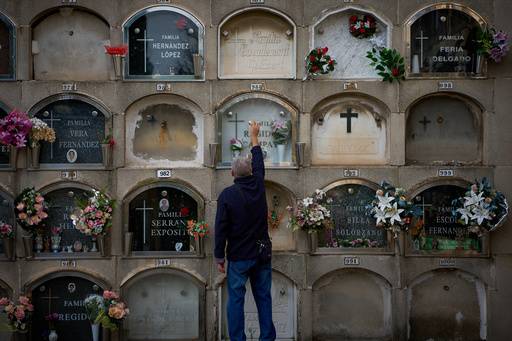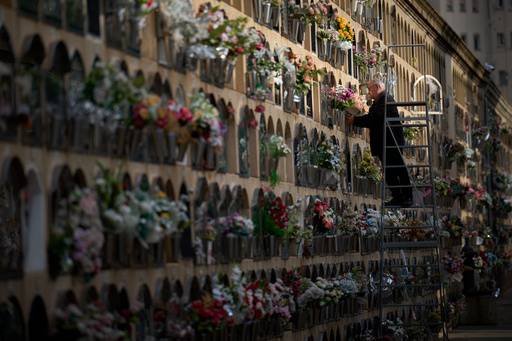US-style Halloween now the custom in Spain

MADRID—Better late than never?
Skeletons, ghosts and monsters of all kinds took to the streets of many cities in Spain at nightfall to celebrate Halloween.
The next morning, an older generation flocked to the country’s cemeteries to remember their dead on All Saints’ Day, bringing flowers and cleaning graves as they spent time with deceased loved ones.
Only in recent years has the sobriety of the Catholic commemoration given way to sweets, fake blood and spider webs from one of the most iconic holidays in the United States.
As in other parts of the world, younger people have embraced the more commercial side of a celebration that originated from the pagan festival of Samhain among the Celts—when the spirit and corporeal worlds were said to merge—before Christianity adopted this occasion as “All Hallows’ Eve” (the eve of all saints).
The cultural change did not happen overnight, but is a consequence of the secularization of societies, explained José Bobadilla, a sociologist specializing in culture and religious diversity.
‘I don’t like Halloween’
“Obviously, the process of a new, more Americanized culture has had an influence not only in Europe,” said Bobadilla, who noted that the current celebration, which is spreading throughout the world, “downplays the idea that it is a time to remember those who are no longer with us.”
The Almudena cemetery in Madrid, the largest in Spain with some five million people buried there, began receiving its first visitors early in the morning.
At the main entrance, several flower stalls waited with bouquets ready for those who left the arrangement of the graves to the last minute.
“We always come on (November) 1st,” said Alicia Sánchez, a 69-year-old retiree who lamented the loss of tradition due to a lack of interest among younger people.
“I don’t like Halloween because it’s not our holiday. But everyone has their traditions, and that should be respected,” she said.

Pumpkins, trick-or-treat
Paz Sánchez visited her husband’s grave with her son, as they do on many other days. This time, however, they were surprised to see so few people despite it being the busiest day of the year.
“Maybe they don’t feel like getting up early to come to the cemetery,” said Sánchez, 87.
A few hours earlier, as in the last decade, Paracuellos de Jarama, a town about 30 kilometers northeast of Madrid, dressed up for Halloween.
It started with just a few neighbors, but now dozens of houses are decorated with pumpkins and ghosts, there is a haunted passageway, and hundreds of people roam the streets trick-or-treating.
‘Costume party’
Miguel Izquierdo transformed his family home into a pirate ship with recycled wood for the hull and an old sheet as a sail.
The lights, music, and 30 kilos (66 pounds) of candy, which ran out in less than two hours, made his place one of the most popular in the neighborhood.
After three years, they continue to participate “because of how much fun the children have,” said Izquierdo, 42, who runs an audiovisual production company. “We like it because it’s a party, because it’s a costume party, and because there’s candy.”
“I don’t dislike the party, but I think it’s not part of our traditions,” said Antonia Martín, 68, who celebrated Halloween, without costume, for the first time—for her grandchildren, she said. —WITH A REPORT FROM AP

















